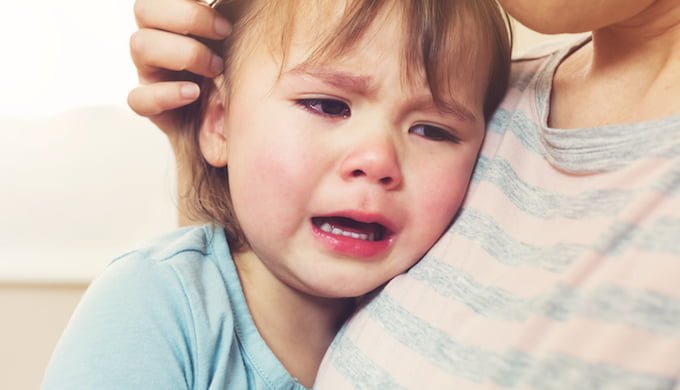Toddler Meltdowns and Temper Tantrums Explained
Understanding toddler meltdowns and temper tantrums, and knowing how to support your child through the process is important to supporting their development.
It’s no small feat to understand toddlers. One minute everything is adorable and sweet, and the next can bring a full on meltdown. Pediatric Occupational Therapist and Holistic Health Specialist, Alison Elsberry offers advice on understanding and empowering your toddler.
Toddlerhood: The Time for Toddler Tantrums
Toddlerhood is a time when your child’s wild spirit is just beginning to explore and make sense of the world around him. Your child will naturally experience many swirling emotions as he encounters people, places, and situations he doesn’t yet understand.
Your child won’t always know what words to use or what to do with all of the new feelings that come up. Finding words to communicate can often feel challenging and overwhelming when he’s having such intense feelings.
It can help to realize, you aren’t alone in this challenging stage of parenting.
About 85% of 2- and 3-year-old children have tantrums, according Dr. Michael Potegal, Ph.D., a psychologist and associate professor at the University of Minnesota. They generally begin to occur when children are between 12 and 15 months old, peak between 18 and 36 months, and continue until around age 4, according to the National Association of School Psychologists. (source)
Related: Positive Discipline for the Early Years
Perhaps you’ve asked your child to use his words when he’s having an epic meltdown?
It can be incredibly frustrating and stressful for both of you when he’s crying, screaming, and upset. Especially when a tantrum happens in a public place. You just want it to stop. Yet, if you ask your child to use his words instead of behaving a certain way, it often intensifies the situation.
That’s because your child didn’t come into this life knowing how to naturally communicate with spoken words. That’s a learned skill that develops over time at his own rhythm and pace.
Tantrum Vs. Energy: The Natural Language and Expression of Your Child’s Soul
It’s the unspoken words and nonverbal communication that occurs quickly and gives instant feedback… sometimes without any conscious thought. And your child knows how to use this language effectively. Especially when she’s trying to get your attention. It takes time for her to put words to the unspoken ways she’s used to communicating.
And it requires an important skill – connecting her energy (or spirit) with her body.
Your child needs to feel something before she learns to recognize and make sense of it in her brain. It’s how children are wired. Because words are formulated after they feel something. They need the experience to make the connection between their energy and their body. And it’s how your child chooses how he feels instead of having someone decide for him.
It also helps your child learn more effective ways of expressing his emotions that still get heard without resistance or drama.
Try This the Next Time Your Toddler Has a Tantrum
- Let the tantrum happen.
- Allow them the space to feel deeply and meltdown. Give yourself 100% permission to have your emotions too, by acknowledging what comes up.
- Take a few deep breaths as you allow yourself to be fully present with yourself and your child.
- Make sure your child is safe (and move them if necessary).
This might seem obvious, but if your child is at risk of harming himself or others, or damaging property, quickly and calmly move him someplace safer. The advice to move him also applies if you’re in a public setting — a store, a restaurant, a worship service — where a tantrum would be disruptive.
“Yes, they might be hitting you or kicking you,” said Dr. Ellen Braaten, Ph.D, a psychologist, associate professor at Harvard Medical School and co-director of the Clay Center for Young Healthy Minds. “But stay matter of fact,” said Dr. Braaten. “Do whatever gets you out quickly without being emotional yourself.” (source)
As Janet Lansbury, author of No Bad Kids, explains, “We can’t fake being calm if we don’t feel calm. That’s very hard to do, and it usually doesn’t work anyway, because children know. But we can remind ourselves again and again that children of this age are so easily overtired, overstimulated, over hungry, over everything. They’re just over it. And it’s okay.”
“It doesn’t mean we’re bad parents, and it doesn’t mean we have a bad child. Children need to be able to fall apart and put themselves back together again and feel better, feel whole.”
Acknowledge Their Emotions
Maybe your child needs a loving hug of reassurance or to be validated while experiencing a meltdown. You’ll notice your child’s emotions shift on their own when you acknowledge them and allow them to be there instead of trying to fix or control their energy.
Emotion is energy just trying to move itself. By giving it permission to be there, more space is created for both of you to feel validated and heard without judgment. Try this guided meditation on understanding anger. Toddlers are fairly young for stillness meditation, but they can focus on the sound of your voice, gently reading a calming script.
It may not always look pretty or feel good when a toddler tantrum happening, yet it’s one of the ways your child learns how to express themselves instead of hiding those feelings or pushing them down for fear of rejection or ridicule.
Because underneath it all, your child’s spirit just wants to be heard and acknowledged.

